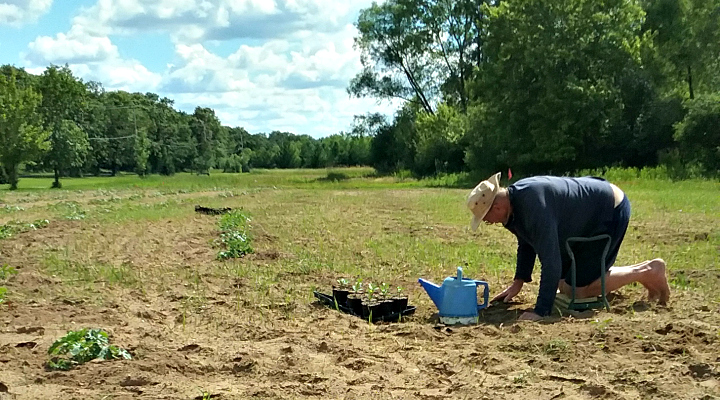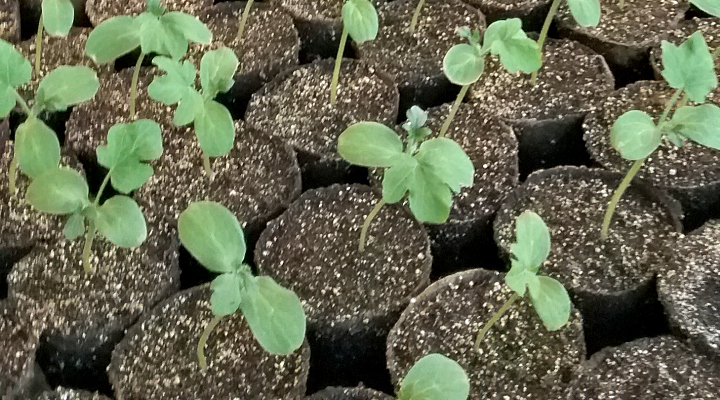
Sandy soil is a plus for growing melons. However, fields soaked from melting snow and the possibility of
late frost (here in SE Wisconsin) prevent early Spring planting.
Planting
The greenhouse helps us get a head start. We plant approximately 2/3 of the melons indoors. When they grow to 4-5 inches tall, they are transplanted into the field, 3 or 4 plants in each mound depending on their variety and relative size. (By this time, usually, the field has been dry enough to plow under once more to accommodate these transplants.)
The other 1/3 of our total melon plants, sown directly into the field at the same time the transplants are introduced, will help stagger the ripening time of the melons. We only risk seeding 1/3 directly into the field, as it is impossible to predict how long our summer weather will last. We can’t count on them, but if we experience more hot and sunny days at the end of August into the beginning of September, this third will provide us with a “bumper crop.”
Cultivating and Nurturing without Chemicals
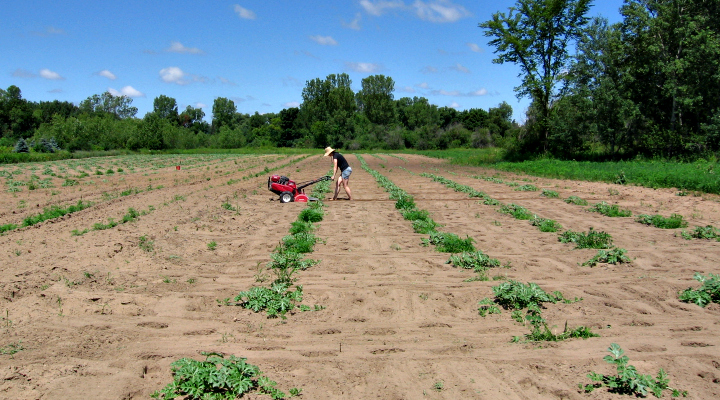
We cultivate each transplant by hand with organic fertilizer and/or manure, and water individually. We tenderly care for each transplant with no chemical pesticides or weed killers. To minimize the weeds, we carefully hoe close to the baby plants, and use a tiller in the larger aisles until the vines are too long to move out of the way.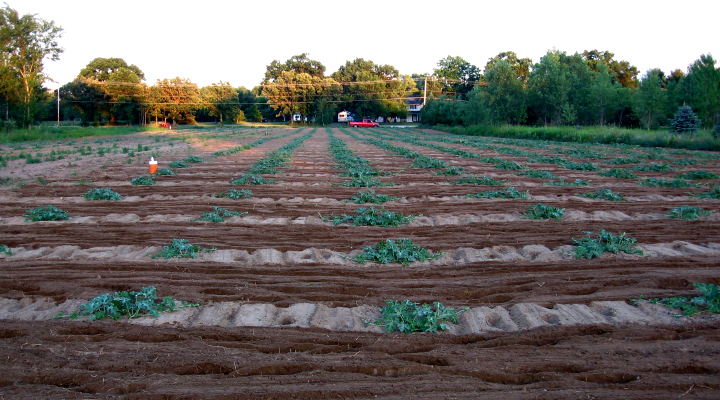
Protecting without Chemicals
Deer trampling throughout melon season is destructive to the vines. Also, as baby melons appear, they attract more deer who love to munch on them (while they are still small enough to get jaws around them), and crows who enjoy dive-bombing larger melons for a watery refreshment on a hot day. We install electric, solar-powered fencing which intimidates (but does not harm) the deer, and two plastic bobbly-headed owls which we move every two days to convince the crows that they must be real and dangerous.
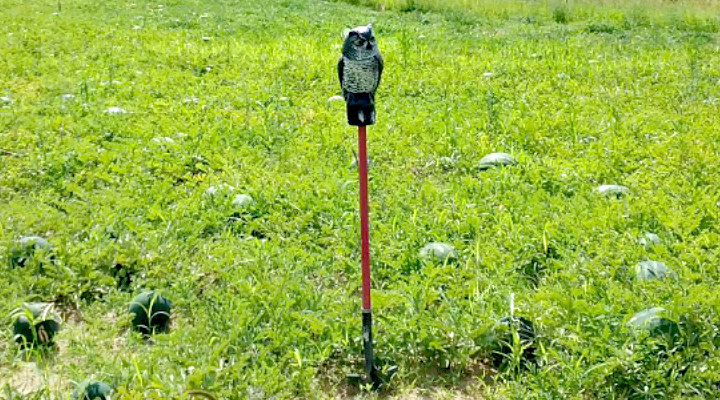
When we observe spots or other plant damage, natural remedies and organic fungicides come into play. Many new, natural organic-certified products have come on the market, making this task much easier than in the past.
